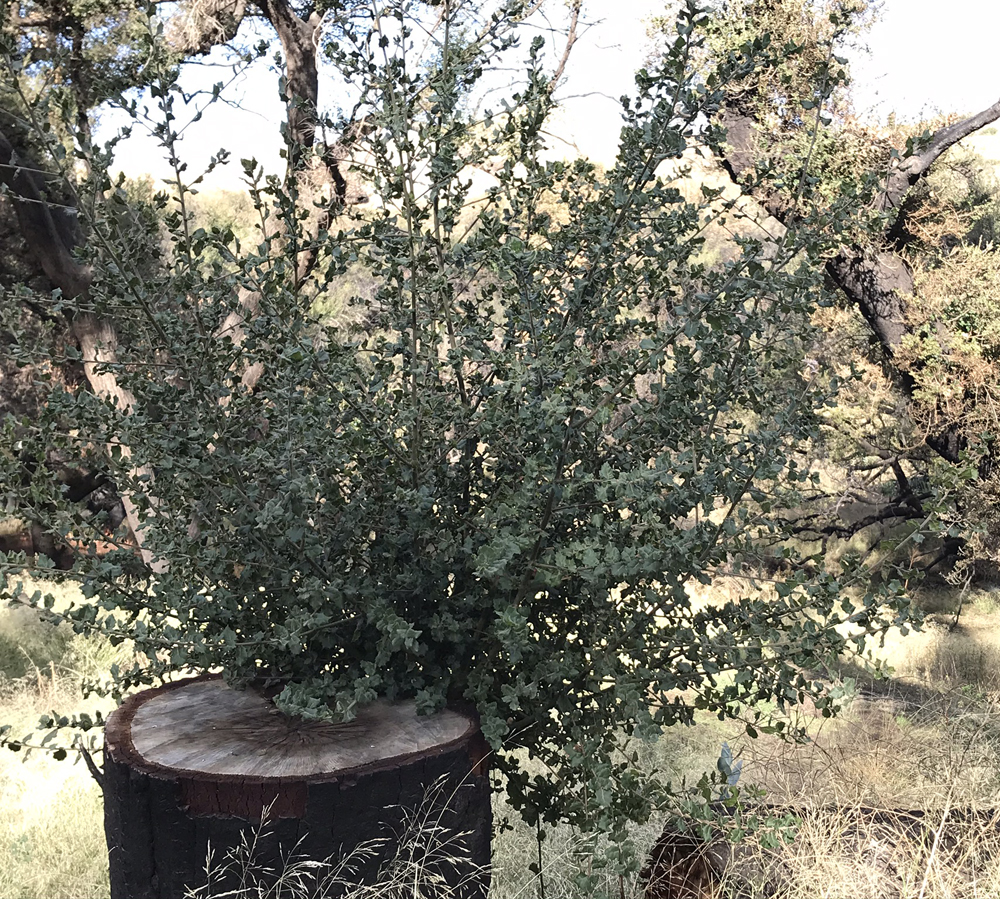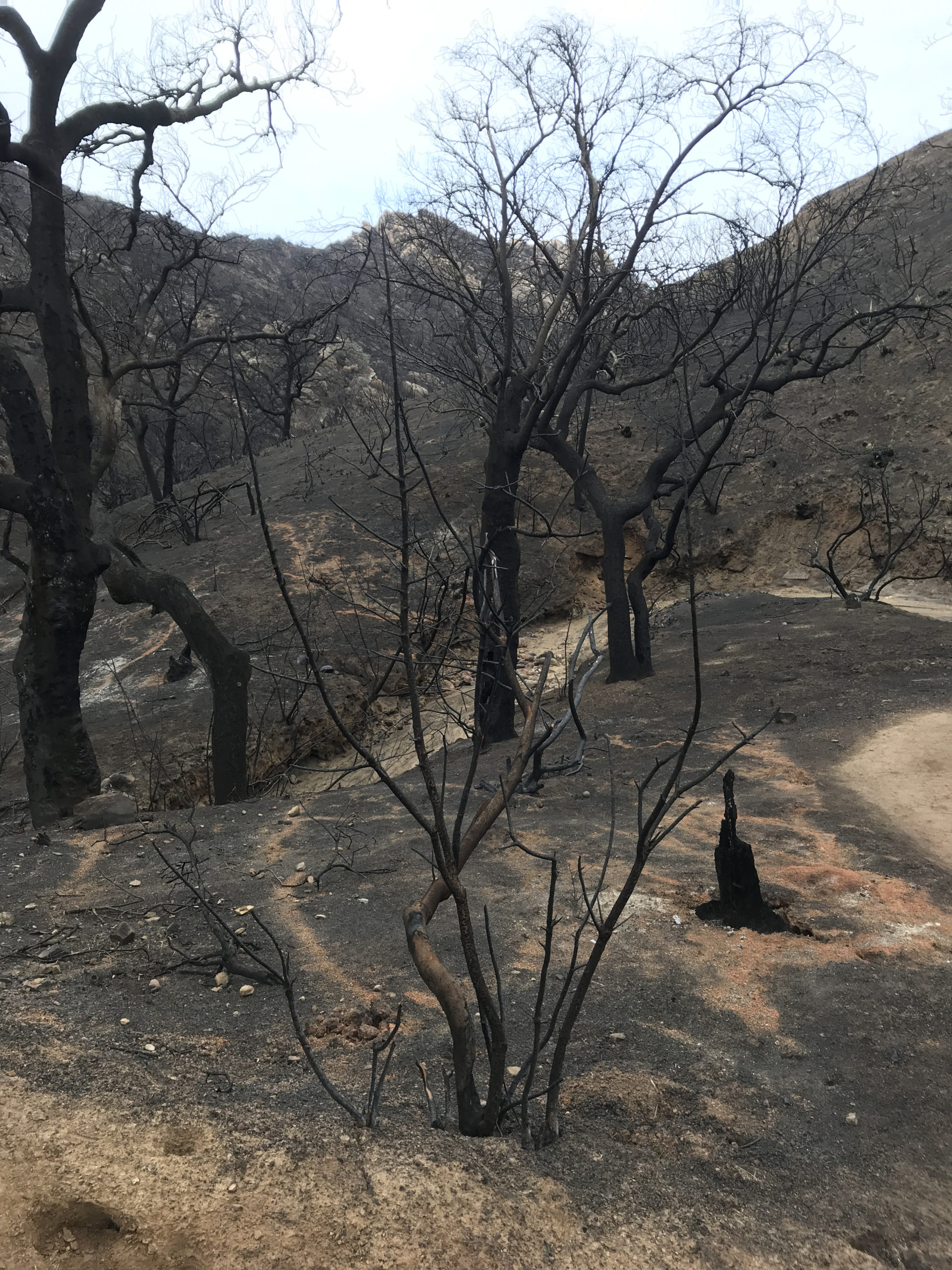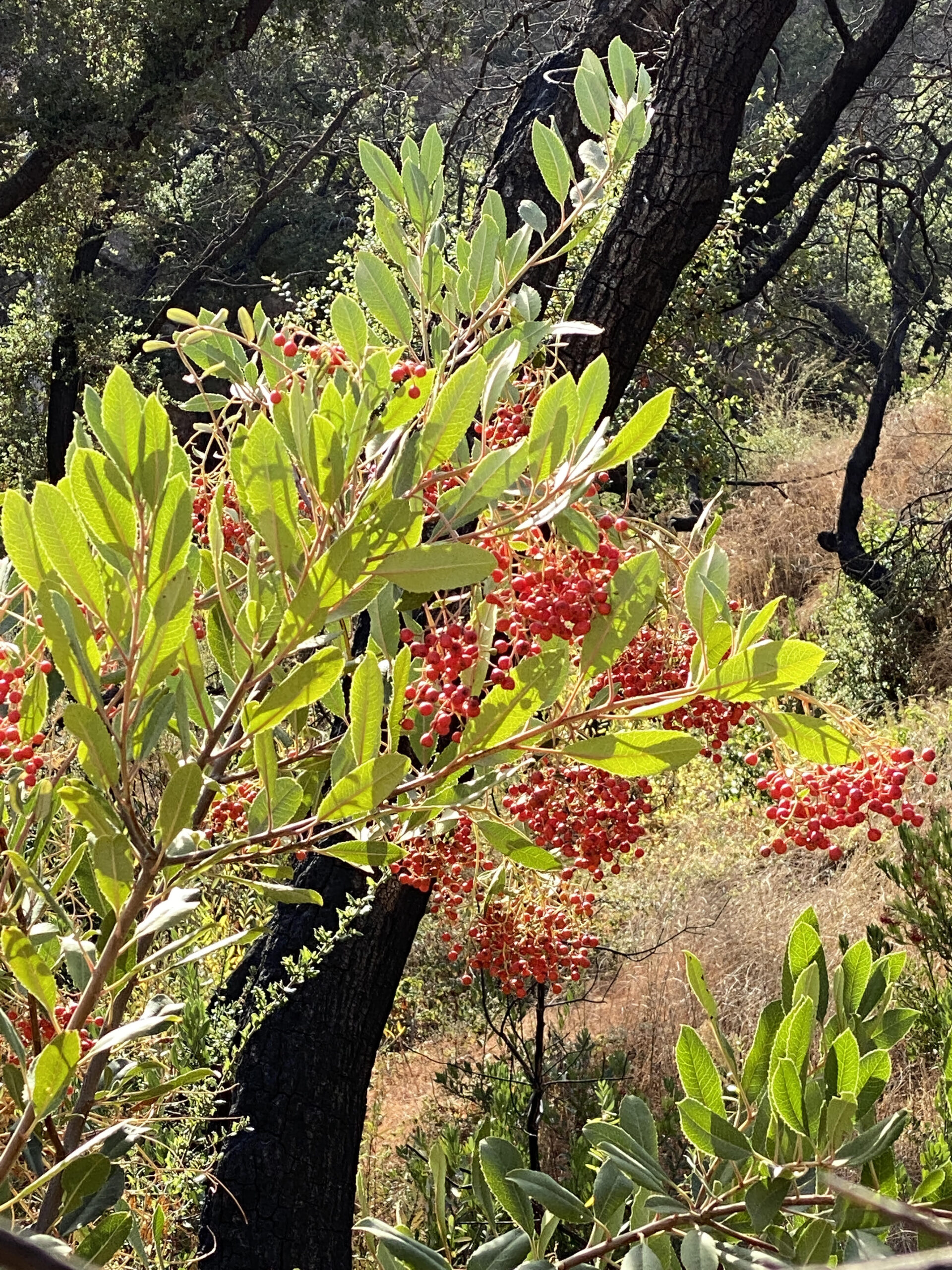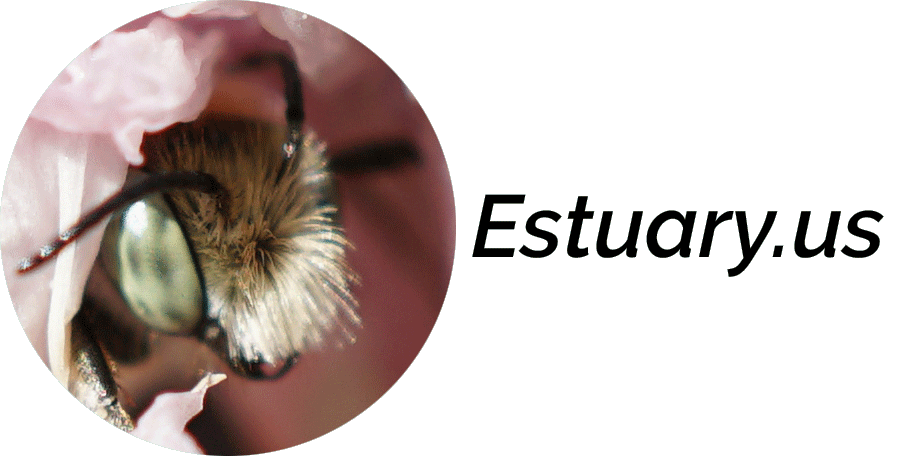In December of 2018, a little more than a month after the Woolsey Fire burned through much of the Santa Monica Mountains National Recreation Area and Conejo Open Space, a friend and I headed out for a hike starting from the Albertson Motorway trailhead. The well-groomed, exotic greenery and cultivated lawns of the adjacent Lang Ranch development soon gave way to charred trunks, carbonized and missing limbs, singed oak stands, and dunes of soot covered soil and sand.
Oaks that were hundreds of years old were scorched, damaged or consumed in various degrees by the fire. Some trees with blackened limbs had other limbs left untouched, some were missing parts of themselves, others were reduced to charry stumps, or vaporized.
⊕⊕⊕
The mature Coast Live Oak has a thick bark that that does not catch fire easily. One can imagine a brush fire rushing through. Hungry for fast fuel, it hits a tree hard but does not linger because the fuel is resistant and slow to burn.
As an oak ages and increases in size, the bark becomes thicker and more protective of the cambium, the living tissue that is the “heart” of the tree. The survival of cambium in a tree’s trunk or root crown often enables resprouting, even if the tree appears to be dead. The health of a tree prior to a fire may also be a factor that affects its ability to survive. Many oak trees with leaves and limbs burned away by half or more were thriving with new growth by the spring of 2020. Others that appeared to have survived during the first year after the fire are now dead.


⊕⊕⊕
We arrived at the Long Ridge Trail, comprised of a unique, twisty bit of single track that bypasses a section of the fire road that is designated as not open to public use. (Note: I have observed some members of my species disregarding this opaque prohibition on occasion, more frequently after the entry signage burned in the fire. Also observed: Hikers slipping through the gaps in the gate on the other side.)
I tried to identify the remains corresponding to the tree-sized Toyon and Sugar Bush shrubs that had grown there. They made this section of the trail unique and, along with the oak trees, provided a good source of shade during many hikes and runs. Now only anonymous stumps remained.

Somewhere here the Toyons once stood with their oblong, slightly serrated leaves, covered with white flower clusters in spring and summer and red berry bunches in fall. When a landscape is stripped of its landmarks, it can be difficult to make sense of what remains. I could not place where any of the surviving Toyon root crowns might be. Sugar Bush, Chamise, California Sagebrush, Coyote Brush and other native shrubs had all burned to the ground. We walked on.
⊕⊕⊕
By the end of January 2019, sprouts started to appear where the taproots of trees and shrubs survived the burn.
Toyon and Sugar Bush shrubs can both resprout within a season from growth nodes around the crown, or from root systems located beneath the ground. Toyon is an obligate sprouter; it cannot depend on its seeds for regrowth after a fire. Sugar Bush is a facultative seeder which means that new growth is achieved both by germination of seed stock and regrowth from the surviving root systems of adult plants. Chaparral shrub and tree regrowth is slow in comparison with the supercharged fire-following wildflowers.

⊕⊕⊕
The day was cold for southern California, not the New Hampshire winter of my childhood, more subtle, but it was winter here, after all: The season of rest for some and rebuilding and gathering strength for others; a time to rely upon stored resources, to reproduce for spring births, to wait for rain.
Even if the fire had not occurred, we were unlikely to see any snakes or lizards on such a day. I do not recall seeing any insects, which perhaps was not so unusual either on an overcast, chilly day. Insects tend to be less active on a cold day.
No busy California Ground Squirrels. No Acorn Woodpeckers. If fellow mammals were present, they were hidden. How had the shy and nocturnal Agile Kangaroo Rat fared through the conflagration? Birds that can fly away, do. Reptiles, mammals (such as the Agile Kangaroo Rat) and insects that habitually shelter in underground burrows at least a couple inches below the surface have a much better chance of survival than do animals that nest above ground or that cannot escape quickly. Even some of the fastest moving large mammals did not all escape the Woolsey Fire.
The customary, expected sounds were missing. This world was quiet, temporarily abandoned by all birds. No California Quail rushing in a low-flying panic from a sanctuary in the brush. Even the crows had abandoned this place. Well, there was nothing much here for even the most adaptable bird at the moment.
⊕⊕⊕
The Acorn Woodpeckers have been back now for quite a while. I hear them knocking about each time I am near oak trees. Along with their standard forage, acorns, of course; tree sap; the usual insects; they are also feeding on fire-following insects. These specialists have been shaped by natural selection to become experts at locating burn areas and consuming burned wood for sustenance.
Two years have passed since the fire. A couple of weeks ago while hiking in the same area I spotted four bird species: a few California Towhees and several Lesser Goldfinches (quite a few of the latter, they are gregarious birds), and two raptors, a Northern Harrier (species population is rated (S3) vulnerable in California by NatureServe) and a Red-tailed Hawk.
